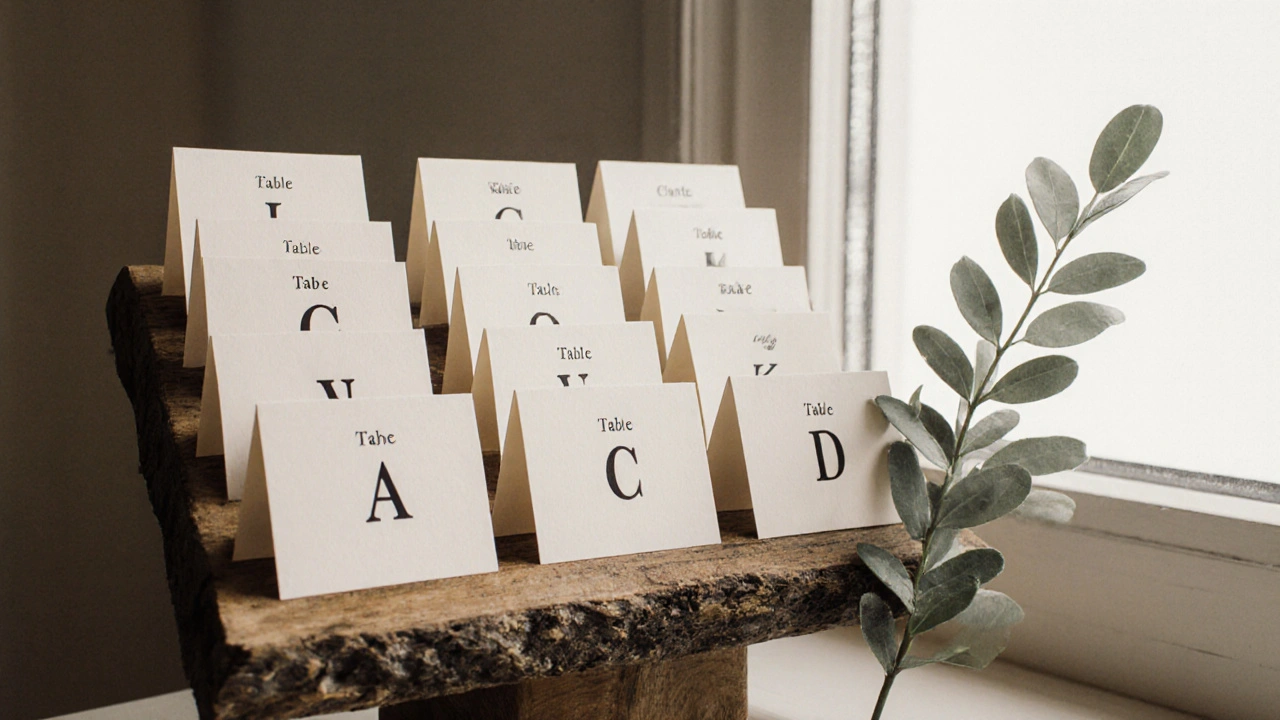Best Paper for Escort Cards: Types, Tips, and Trusted Choices
When you’re picking out escort cards, small cards that guide guests to their seats at weddings, the paper you choose isn’t just about looks—it affects how they feel, how they hold up, and whether they survive the day without smudging or curling. The right paper makes your seating chart look intentional, not last-minute. It’s not just stationery; it’s part of the guest experience. And while many couples focus on fonts and colors, the paper weight, how thick or heavy the cardstock is, measured in grams per square meter or pounds is what gives those cards substance. Too thin, and they flop. Too thick, and they won’t fit in holders or get lost in the breeze.
Most professionals use cardstock, a sturdy, thick paper designed for printing invitations and formal cards between 220gsm and 300gsm. That’s the sweet spot—thick enough to feel premium, light enough to print cleanly on home or local printers. If you’re doing destination weddings, weddings held in another city or country, often with climate challenges, go for 250gsm or higher. Humidity and heat can turn thin paper into a soggy mess, especially if cards are left outside or in a non-climate-controlled venue. Avoid glossy finishes if you’re hand-writing names—ink smears. Matte or linen textures hold pen better and look more elegant under soft lighting. If you’re printing at home, make sure your printer supports thick paper. Many budget printers jam on anything over 200gsm.
You’ll also want to think about escort card holders, stands, clips, or props that display the cards at the reception entrance. A heavy card on a flimsy stand looks unbalanced. A lightweight card on a heavy wooden stand looks odd. Match the weight of the card to the display. For DIY options, cardstock with a slight texture works best with clips or ribbon ties. For high-end looks, cotton paper or recycled fiber papers add a tactile, artisan feel—perfect for rustic or eco-friendly weddings. And if you’re worried about last-minute changes, choose paper that lets you write over mistakes with a fine-tip gel pen. You don’t need to reprint the whole batch if someone cancels.
The best paper for escort cards isn’t the most expensive—it’s the one that fits your style, your venue, and your plan. Whether you’re going for minimalist modern, vintage charm, or tropical destination vibes, the material should support the mood. A couple in Bali won’t use the same paper as one in London in December. And if you’re on a budget, you don’t need to buy luxury paper. Many affordable brands now offer 250gsm cardstock that looks just as good as pricier options. Test a sample first. Print a name on it. Hold it. Feel it. Does it feel like the kind of detail you’d want your guests to notice? If yes, you’ve got your paper.
Below, you’ll find real-world advice from couples and planners who’ve been there—how to pick paper that survives travel, how to avoid printing disasters, and which materials make escort cards look like they cost way more than they did. Whether you’re DIY-ing your whole wedding or hiring a planner, these insights will save you time, stress, and maybe even a few hundred dollars.

- Nov, 20 2025
- 0 Comments
DIY Wedding Escort Cards: Templates, Paper Choices, and Printing Tips
Create beautiful DIY wedding escort cards with the right templates, paper choices, and printing tips to avoid common mistakes and impress your guests without breaking the bank.
read more